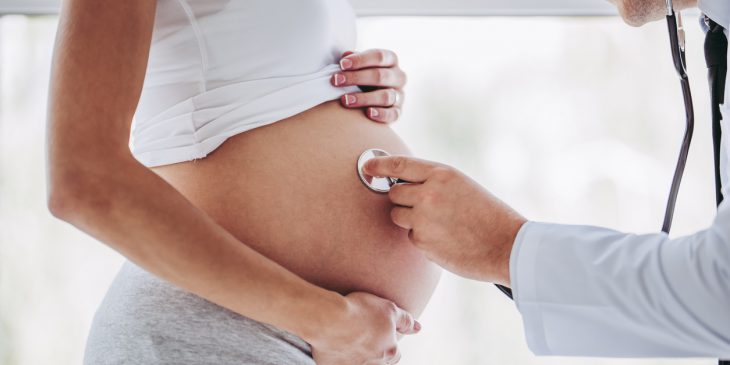Pregnant women who use opioids and amphetamines have a higher risk of severe health problems during pregnancy than women who do not use these drugs, according to a new study by researchers at the University of Pittsburgh.
Over the last two decades, the rate of women in the United States who experience severe health risks during pregnancy has increased by 45%. Previous research has suggested chronic health problems, racial disparities and older maternal age may all play a part in this startling statistic, but the role of substance abuse disorders has been underexplored.
“There’s an increasing recognition of substance use disorder as a chronic disease that has medical consequences in pregnancy,” said the study’s lead author, Marian Jarlenski, Ph.D., M.P.H., associate professor of health policy and management at the University of Pittsburgh Graduate School of Public Health and associate director of the University of Pittsburgh Center for Women’s Health Research and Innovation. “It’s not weak willpower; it’s a disease.”
These health issues during pregnancy or delivery, known as severe maternal morbidities, include conditions that can lead to death or affect mothers for the rest of their lives, like blood clots, heart attacks, aneurysms and sepsis. Jarlenski thinks the rise of drug use among pregnant women could help to explain the increasing rates of these conditions.
“What we’re trying to get at is explaining the increase in severe maternal morbidity, and to put together all the pieces,” Jarlenski said. “Substance use disorder is a real piece of the puzzle.”
The researchers analyzed U.S. hospital records representing 54.3 million pregnant women who gave birth between 2003 and 2016. Women between the ages of 18 and 34 who were reported as abusing opioids had a 50% increased risk of severe health issues during pregnancy compared to women who didn’t use drugs. Women who abused amphetamines during pregnancy had almost twice the risk of health problems as women who didn’t use drugs.
The researchers found that younger, non-Hispanic whites living in rural counties accounted for the majority of pregnant women with any substance use disorder. Data also showed that 70% of pregnant women with substance use disorders were covered by Medicaid, compared to private insurance, which accounted for 23% of pregnant women with drug disorders.
Jarlenski and her team found no link between marijuana use disorder and increased risk of severe health complications during pregnancy. The body processes marijuana differently than narcotics, Jarlenski noted, and marijuana use is not associated with overdose or injection drug use.
To help prevent severe issues during pregnancy and delivery, Jarlenski suggests health care providers start the conversation about drug use at the first prenatal appointment.
“In the United States, we do a great job of universally screening for tobacco use during pregnancy. We need to extend that to other substances,” Jarlenski said. “It’s really important to have that conversation early in prenatal care and identify substance use disorder in a non-stigmatizing way. This does not mean a drug or urine test, but rather asking validated survey questions to identify whether the patient’s substance use constitutes a disorder.”
Jarlenski notes that stigma plays a large role in substance use disorders and the outcomes associated with them. By screening all pregnant women for drug use early on and connecting them with treatment, Jarlenski says, doctors can not only improve care for women during their pregnancy but also help them throughout their lives.
“Women are more receptive to care and treatment during pregnancy, but we’re falling short if we do not also take a serious look at how we can extend the services offered to these at-risk women as they proceed post-delivery through their fourth-trimester,” Jarlenski said. “This is a crucial time when women may be most vulnerable to relapse.”
The full results of the study will be published in Drug and Alcohol Dependence in November. While substance use disorders are only part of the equation, Jarlenski hopes her study will help the medical community reduce the rising number of women who suffer severe illnesses during pregnancy.
“I’d love to see the curve of severe maternal morbidity level off or even decline,” Jarlenski said. “The entire time I’ve been in public health, the drug overdose curve keeps climbing.”
Taylor Andres, Sheila Davis, Ed DeWitt and Tyler Wagner also contributed to this post.








